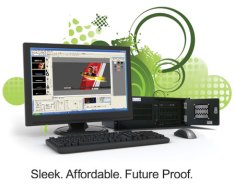 The Emergency Alert System (EAS) in the US has been in place since the mid 1990’s, which replaced the Emergency Broadcast System, or the EBS. The purpose of these emergency alert systems is to allow local broadcast radio and TV stations to transmit emergency messages from various local, state and national government agencies to the nation’s listeners and viewers.
The Emergency Alert System (EAS) in the US has been in place since the mid 1990’s, which replaced the Emergency Broadcast System, or the EBS. The purpose of these emergency alert systems is to allow local broadcast radio and TV stations to transmit emergency messages from various local, state and national government agencies to the nation’s listeners and viewers.
Recently the Federal Communications Commission (FCC) has been working to update the EAS system with a more complete and modern messaging system, the Common Alerting Protocol (CAP), and has now released working standards and protocols for this updated system. The new system includes the ability for communications companies to receive emergency alerts over the internet, new methods to include these messages in new media applications, and also includes additional capabilities for multi-lingual alerts and to add video images to the messages.
We have all heard the “duck quack” signals that come with these alerts, sometimes they are just tests, and other times they are actual emergency alerts for weather related warnings, Amber alerts, and other local and regional messages.
signals that come with these alerts, sometimes they are just tests, and other times they are actual emergency alerts for weather related warnings, Amber alerts, and other local and regional messages.
While the new FCC rules and regulations are in the process of being set, television and radio EAS equipment manufacturers have been keeping up with the requirements as they become more certain, and are in the process or already offer equipment to meet the federal guidelines for these new CAP requirements
Compix has been working with leading manufacturers of EAS and CAP compliant equipment to provide cost effective and reliable character generator solutions for television broadcasters looking for the next generation of easy to use EAS and CAP compliant products.
 One of these products is the Compix ChannelBrander™. This brings your channel to life with great features to keep your audience tuned in. Included is the ability to create continuous streams of automatically updated informational tickers and crawls, weather conditions, plus EAS and CAP emergency alerts. ChannelBrander uses embedded smart technology to offer powerful channel branding and affordable creation of interactive, informational headline feeds.
One of these products is the Compix ChannelBrander™. This brings your channel to life with great features to keep your audience tuned in. Included is the ability to create continuous streams of automatically updated informational tickers and crawls, weather conditions, plus EAS and CAP emergency alerts. ChannelBrander uses embedded smart technology to offer powerful channel branding and affordable creation of interactive, informational headline feeds.
With added tools for creating graphics, such as customized lower-thirds, broadcasters can also easily monetize the on-screen space and increase viewer loyalty.
With flexible options for putting targeted and personalized content on-screen, users can add crawls, logos, and more – all on a single channel system. ChannelBrander enables simultaneous display of two independent crawls that automatically draw data from text files updated manually or automatically. Users can go also go to news, sports, weather, and financial data websites to link RSS feeds with the ChannelBrander. Every ChannelBrander features broadcast ready requirements like preset “power up ready state” and includes an active bypass relay.
text files updated manually or automatically. Users can go also go to news, sports, weather, and financial data websites to link RSS feeds with the ChannelBrander. Every ChannelBrander features broadcast ready requirements like preset “power up ready state” and includes an active bypass relay.
For more information on Compix solutions for your current and future EAS and CAP requirements, please contact us at sales@compix.tv for more information about your particular configuration and requirements. Till next time!












